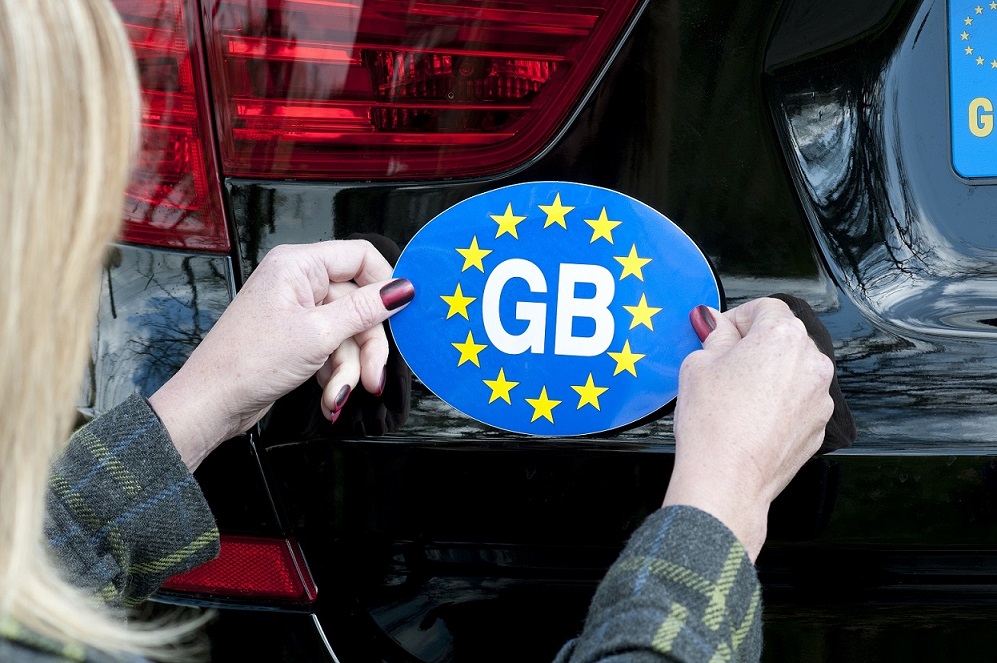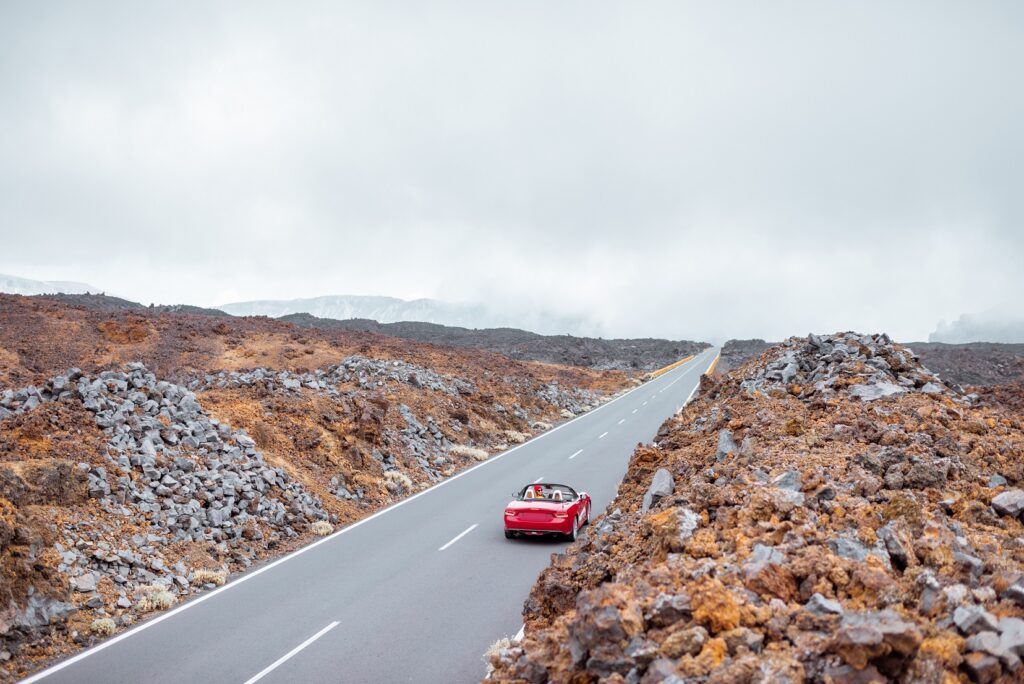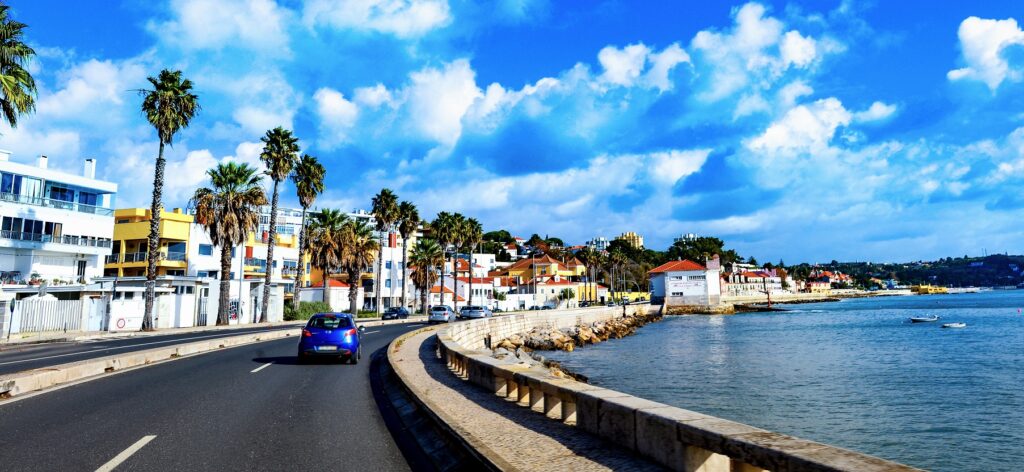If you are driving in Europe in a banger rally this year you will need to know the motoring laws of each country you intend to visit.
While laws vary from country to country, there are some things that won’t change such as the deed for the driver and all passengers to wear their seatbelts at all times.

Paperwork you need when driving in Europe
Wherever you go you will need to take your driving licence, your log book (V5C) and your insurance certificate. If you’re venturing off in a hired or leased car (which would be pretty unusual for a banger rally!) you’ll also need a VE103 certificate.
Adding to the bureaucracy, in some non-European countries you may need an international driving permit (IDP) so check before you travel. If you do need an IDP you can get one over the counter at the Post Office.
It’s also a good idea to obtain a Green Card from your insurance provider. This will simplify things should you have an accident or, for any other reason, need to swap insurance details, make a claim or prove you are insured.
Break motoring laws at your peril
On-the-spot fines can be imposed and must be paid in euros in most European countries. Traffic police patrols are usually equipped with portable ATM machines to facilitate immediate payment.
Ask for a receipt showing the maximum amount of the fine. If you refuse to pay an on-the-spot fine you will be asked for a deposit to cover the maximum fine for the offence committed.
Failure to comply could mean the loss of your driving licence, registration document or even confiscation of your vehicle.
To avoid the risk of on-the-spot fines you will need to check the laws for each country you plan to visit.
Here are the traffic laws for driving in France, Spain and Portugal.
Laws to remember when driving in France
Drive on the right
Like most of Europe, you will need to drive on the right-hand side of the road, which can take some getting used to, especially when overtaking, negotiating left turns across traffic and entering roundabouts.
When driving in busy cities, at unmarked intersections priority is given to those coming from the right, unless otherwise stated. Be careful!
Speed limits
Speed limits on two-lane (single carriageway) highways were cut from 90km/h (56mph) to 80km/h (50mph) in July 2018 in an effort to reverse the increasing number of road deaths in France.
On the French motorways the speed limit is 130km/h (80mph), and 110km/h in the wet (70mph), unless otherwise indicated. Dual-carriageways and other roads may also have two speed limits, one for fine weather driving and the other for poor weather. In built up areas the speed limit usually drops to 50km/h (30mph).
Equipment you must carry when driving in France
The French law requires cars to carry warning triangles and high-vis jackets for all occupants in case of emergency. The jackets must be easily accessible and it’s a good idea to hang them over the back of the car seat. Then they are visible for all to see and you are less likely to be subject to a random police stop and check.
You also need to carry two French government certified breathalysers. If you only have one and police ask you to use it you won’t be able to drive on as there won’t be another in the car. Single-use breathalysers normally only last 12 months so check yours is still in date.
Right-hand drive cars will also need to headlamp beam deflectors to avoid dazzling oncoming road users. If your car does not have a number plate that includes the GB euro-symbol you must display a GB sticker prominently and you will need a spare set of bulbs for all external lights.
Satnav and speed camera alerts
Speed camera detectors are banned in France and you could be fined up to €1,500 or even have your vehicle taken away if you are caught with one in your car. If your satnav can show fixed speed cameras, then you’ll have to disable alerts before you drive in France.
Drivers can not use headphones or headsets for phone calls or listening to music.
Low emission zones
Low emission zones – either full time or ’emergency’ have already been introduced in Paris, Lyon, Lille and Grenoble, and more cities are expected to follow suit.
Vehicles in restricted areas have to display aCRIT’Air, Air quality Certificate and those who don’t race fines of between €68 and €135.
There are six different types of sticker depending on the emissions of your vehicle and you can obtain one here for a fee of €4.41 including postage.
Emergency low emission zones operate when monitoring systems show that air pollution is high so could be in effect at any time so be alert to road signage.
Drink driving limit for France
The drink drive limit for new drivers (less than 3 years) has gone down from 0.05% to 0.02%, which is the same as for bus and coach drivers.
Laws to remember when driving in Spain

Drive on the right
Like most of Europe, you will need to drive on the right-hand side of the road, which can take some getting used to, especially when overtaking, negotiating left turns across traffic and entering roundabouts.
When driving in busy cities, at unmarked intersections priority is given to those coming from the right, unless otherwise stated. Be careful!
Spanish speed limits
Spanish speed limits are fairly rigid: In Built-up areas the limit is 50km/h (31mph); on 2nd category roads outside built-up areas it’s 90km/h (55mph); on 1st category roads outside built-up areas it’s 100km/h (62mph); on motorways it’s 120km/h (74mph); on motorways and dual carriageways in built-up areas it’s 80km/h (49 mph). Near schools and in some residential zones the limit is 120km/h (13mph).
There are also minimum limits of 60km/h (37mph) on motorways and dual carriageways.
Equipment you must carry when driving in Spain
Right-hand drive cars will also need to headlamp beam deflectors to avoid dazzling oncoming road users. If your car does not have a number plate that includes the GB euro-symbol you must display a GB sticker prominently and you will need a spare set of bulbs for all external lights.
You must carry a spare wheel and the tools to change a wheel, or a puncture repair kit.
You will also need two reflective warning triangles for use in the event of an accident or breakdown and reflective jackets for all occupants of the car.
If you wear glasses to drive you must carry a spare set.
Satnav and other technology
Anything with a screen (TV, video, DVD etc.) which could distract you when driving should be positioned where the driver can not see it. This doesn’t apply to a satnav but you must not touch or programme it unless you are parked in a safe place. It’s forbidden to carry or use radar detection technology.
If you use a phone while driving it must be hands-free. You must not use earpieces or headphones while driving and could be fined €200 in doing so.
Low emission zones
There is a Low Emission Zone (Zona Baixes Emissions) in Barcelona and a Zero Emissions Zone (ZEZ) in Madrid. You can find information about Spain’s LEZ and ZEZ here.
Drink driving limit for Spain
The legal limit is 49 milligrams of alcohol per 100 millilitres of blood (29 milligrams for drivers with less than 2 years’ experience). Penalties include fines, withdrawal of driving licence and/or prison. Drivers can be drug tested too.
Laws to remember when driving in Portugal

Drive on the right
Like most of Europe, you will need to drive on the right-hand side of the road, which can take some getting used to, especially when overtaking, negotiating left turns across traffic and entering roundabouts.
When driving in busy cities, at unmarked intersections priority is given to those coming from the right, unless otherwise stated. Be careful!
Speed limits in Portugal
Motorists who have held a driving licence for less than 12 months must not exceed 90km/h (55mph) or any lower speed limit sign-posted.
The speed limits for Portugal are: in built up areas 50km/h (31mph); outside built up areas 90km/h (55mph); on motorways 120km/h (74mph). There is also a minimum limit of 50km/h (31mph) on motorways.
Equipment you must carry when driving in Portugal
Right-hand drive cars will also need to headlamp beam deflectors to avoid dazzling oncoming road users. If your car does not have a number plate that includes the GB euro-symbol you must display a GB sticker prominently and you will need a spare set of bulbs for all external lights.
All occupants of your car must carry photographic proof of identity at all times.
Reflective jackets are also recommended (though not compulsory) for visitors as is a warning triangle.
A Temporary Electronic Toll Device (DEM) enabling prepayment of tolls is required, before using many motorways in Portugal. You can find out more here.
Satnav and other technology
Drivers are forbidden from using radar detectors or dashboard cameras in Portugal. Phones must be hand free and satnavs must be programmed while you are safely parked before setting off on your trip.
Low emission zones
The Portuguese capital, Lisbon, has created a low-emissions zone (LEZ) banning older cars from entering during peak hours. Cars registered before 2000 are banned from ‘Zone 1’ between 7am and 9pm, while cars from 1996 or earlier are also banned from Lisbon’s outer ‘Zone 2’. Find out more about the LEZ here.
Drink driving in Portugal
In Portugal if the level of alcohol in the bloodstream is 0.05 percent to 0.08 percent, you could face a fine and withdrawal of your licence for a minimum of one month to a maximum of one year.
If it is more than 0.08 per cent, you could face a fine and withdrawal of your licence for a minimum of two months up to a maximum of two years. The police are also empowered to carry out drug testing.
